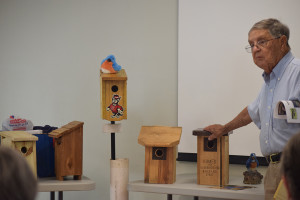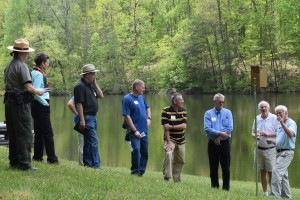Benefits of Monitoring Bluebirds in Nestboxes
- Many people are hesitant about looking into their nest boxes, but monitoring your boxes regularly can give bluebirds a much greater chance of survival.
- Monitoring leads to the early detection of problems and provides valuable statistical data.
NOTE: Use caution as there could be predators or insects in nest box.
Caution/Concerns for Nestbox Monitoring
- Warning: When you check the nest box, be aware of potential insects or other danger.
- Carefully eliminate wasps, blowfly larvae, ants, and mites.
- Do not use pesticides in the nest box!
- Remove dead birds immediately!
- Remove and dispose of old nests as soon as the young have fledged. This prevents the birds from building a new nest on top of the old one.
Monitoring Tips
- Nest boxes should be monitored at least once a week during nesting season.
- Check the boxes in the afternoon during egg laying time.
- Do NOT open occupied nest boxes once the nestlings are fourteen days old.
- Tap on the side of the nest box before opening it. Do not stand in front of the entrance hole! The adult will usually leave and the young will huddle down in the nest.
- Warning: Open the box very slowly and carefully. Be prepared for predators and wasps. Check the box quickly and leave.
- Remove and dispose of the nest as soon as the young have fledged. Clean the nest box thoroughly and rub unscented ivory soap on the interior surfaces as a wasp deterrent.
- Use a molded wood fiber nest cup in nest boxes to facilitate nest building as well as monitoring activities.
Monitoring Factsheet from NABS (North American Bluebird Society.


Photos by Glenda Ryan of Knightdale, North Carolina
